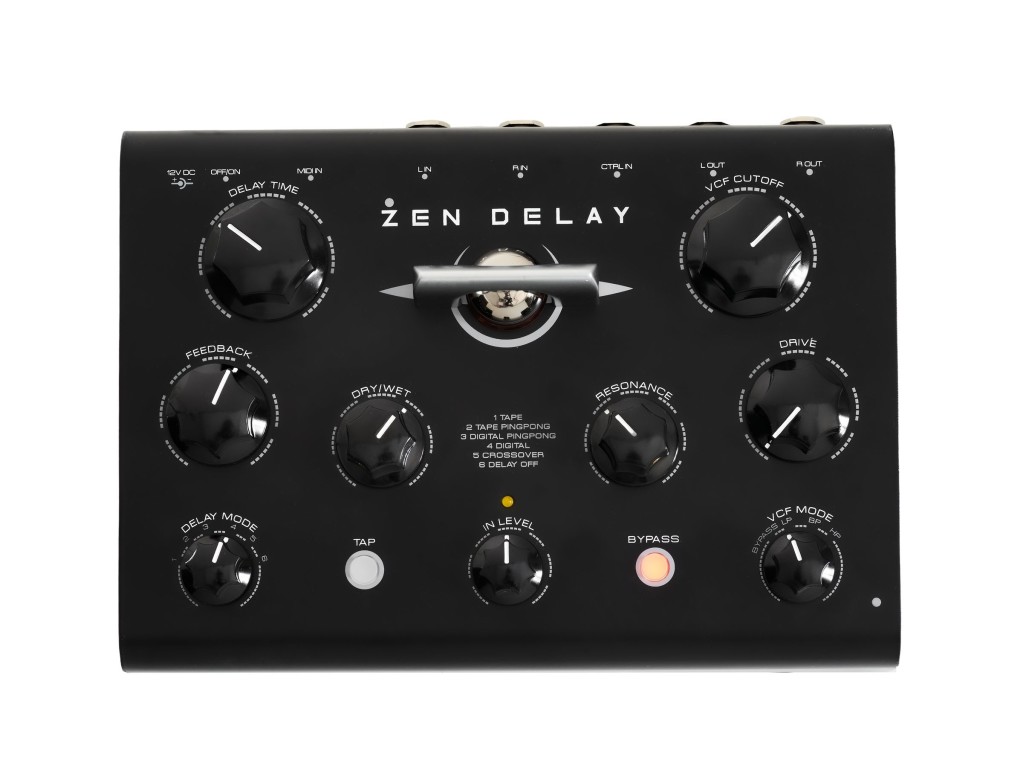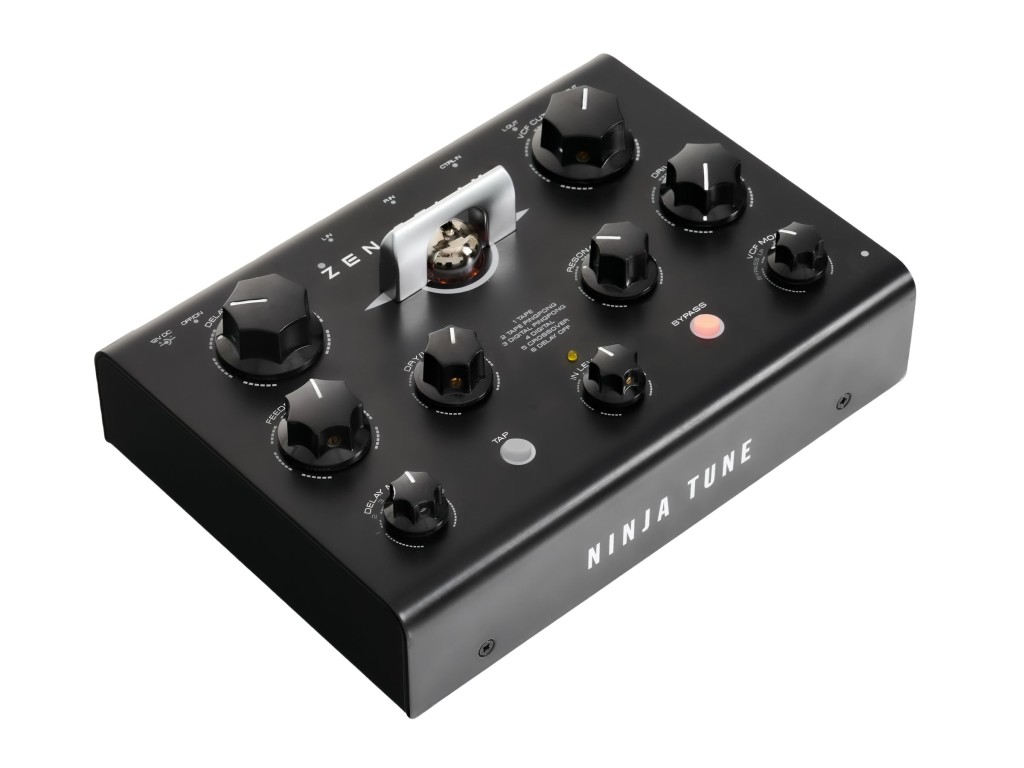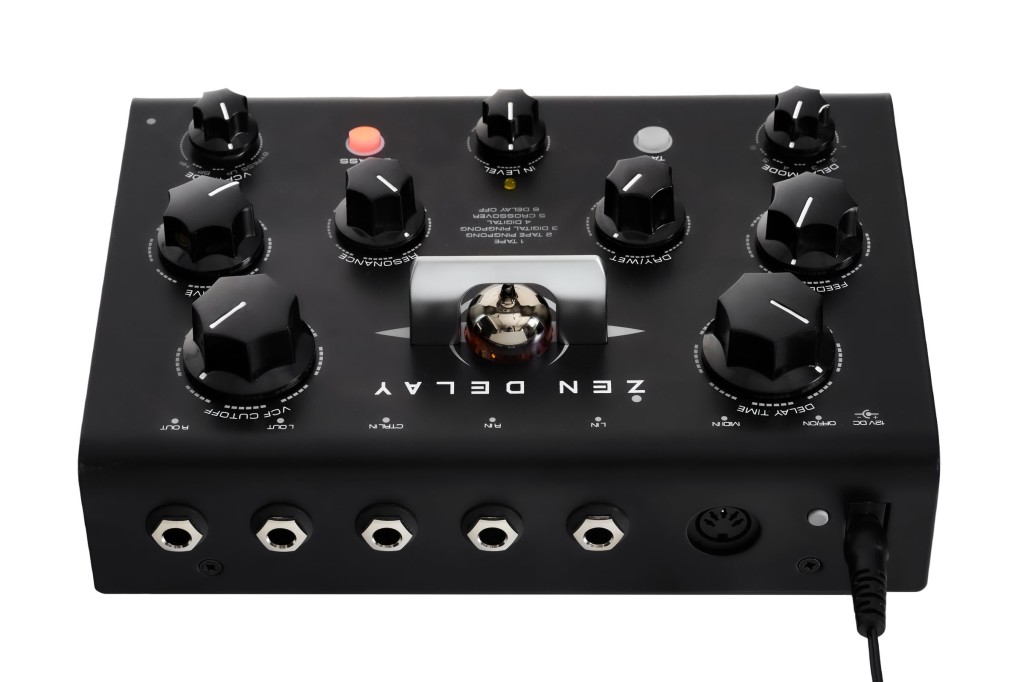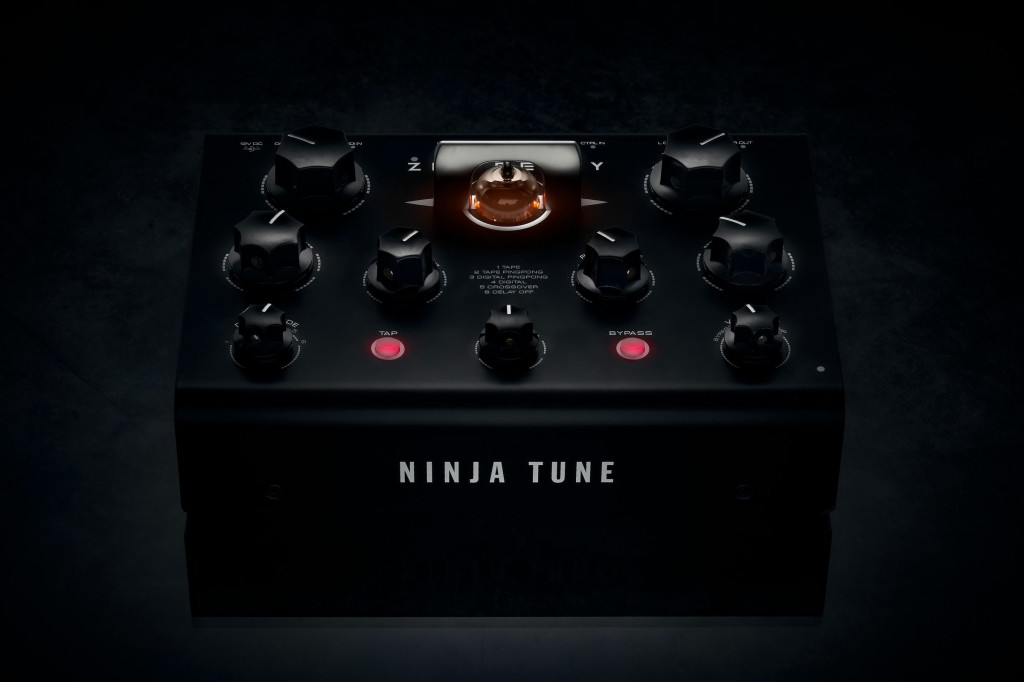We can talk a lot about engineering. But at some point, you pack vacuum tubes and DSP and chips together, and you get a delay that’s extreme enough to have Ninja Tune and Coldcut printed on it.
Yes, meet the Zen Delay, a new unique stereo delay from Erica Synths, but carrying the Ninja Tune label on it. So, yeah, the record industry is now so bad, we’re making analog delays. Wait – that’s kind of awesome. Stereo delays are more fun to some of us than records, anyway.

Now, I’ve known about this thing for quite a while, so if it seems like I’m raving, I’m not getting that from the press release. Dr. Walker, the underground acid master from Germany, first clued me in to this project with Matt Black, Ninja and Coldcut co-founder. Ninja’s logo is on it, but it’s really both the baby of Ingmar and Matt – part Air Liquide, part Coldcut – with all the sound elements from Riga’s Erica.
The idea is pretty simple: make a stereo delay that you can dial from gentle stereo warmth and space all the way up to extreme dub and screaming overdrive.
Erica sent me a late-stage prototype to test, and I spent a lot of time with it. The trick here is really the combination of analog and digital ingredients:

Stereo delay. You get a precise, full-ranging stereo dub delay, with as little as 1ms all the way up to 5 seconds, and it’s syncable.
And thanks to being digital, you can choose what that delay is – tape, tape pingpong, “digital” (sounding more or less like your basic digital delay), or a special fifth mode. (On mine, that fifth mode was something called “crossover,” which wasn’t terribly useful. Now, it’s a vintage delay with some nice lo-fi touches, I’m told, but I haven’t yet gotten to test it, as it’s actively in development.
Multi-mode filter. There’s a 24dB filter with resonance, which you can use in lowpass, highpass, or bandpass modes.
Valves! Valve saturation and overdrive are what really complete the package – you’ll spot that lovely tube popping out of the top.
Tempo controls. There’s CV in, plus MIDI in, plus tap tempo, so you can use external time, free time in milliseonds, or tap in a tempo.
There’s also clock division, in “beat” mode (which wasn’t available yet on the firmware I first tested). Push and hold the TAP button, and the delay time knob becomes clock divider/multiplier – down to an eighth of the beat, and up to 8 times the beat. (This will actually increase the potential length of the delay up to 50 seconds, so I guess fast bathroom breaks are now possible onstage!)
High-quality digital engine. High-spec ADC and DAC combine with a 24-bit, 48k digital engine.

So in other words, you get the precision and precise timing of the digital delay, plus the ability to choose different delay models in a single unit. But the overall impact is very, very dirty, when you want it to be – thanks to that analog overdrive. So when you want warmth or grime or total insanity, you can dial that in.
“Complete package” and “dialing” are also essential, because Erica have really leaned in to the heavy, vintage, metal feeling of the box. It’s 870 grams of metal here (almost two pounds), with one-knob-per control, and each knob is a big, smooth-feeling dial.
This is a box for your hands, not your feet – something that you do want to reach out and grab and adjust. That makes it ideal for studio and live production. I can absolutely see wanting this live.
Erica have been in this territory before, with their screaming Acidbox (based on the Polivoks filter, and sounding just as angry and Soviet), and the Fusionbox. The Acidbox is terrific, but it’s like having a giant bottle of hot sauce at the ready – it’s just this mental USSR-style filter. The Fusionbox is the nearer comparison, and it might still be the one you want, since it has flanger and ensemble stereo in addition to delay.
But make no mistake – as a dubby delay, the Zen Delay is just about perfect. Easy access to the Drive setting, the useful dubby delay modes, and that magical distortion make it something truly special. And it’s only something Erica could do – it combines their custom DSP, their lovely Latvian-made chips, and this analog into one box.
To anyone who says no one is “innovating,” maybe it’s just a misunderstanding of what musical innovation is. Erica’s creation here is a kind of new vintage. The starting point is some traditions, but constructed into something that you haven’t had before – which is basically what instrument design has always been about.
Pricing: pre-order at €499 + VAT, with the first 300 units with a limited edition Zen Delay t-shirt at a discounted €454 + VAT, from the Ninja Tune and Erica Synth websites.
Ships in December.
https://www.ericasynths.lv/shop/standalone-instruments-1/zen-delay/
Now, you may or may not have half a grand to spend on a delay that you won’t get until Christmas. But, if you do, this is clearly a nice way to go about it.
I’m editing some sounds and will post at the end of the day. But this short video with The Bug sums it up beautifully:

The press release claims this is the first effects unit to be produced by an electronic label, though I’m not entirely certain that’s correct. (Some CDM reader probably has a tiny label that ran off a few pedals, I’m guessing, before I jump out on a limb and go along with the claim!)